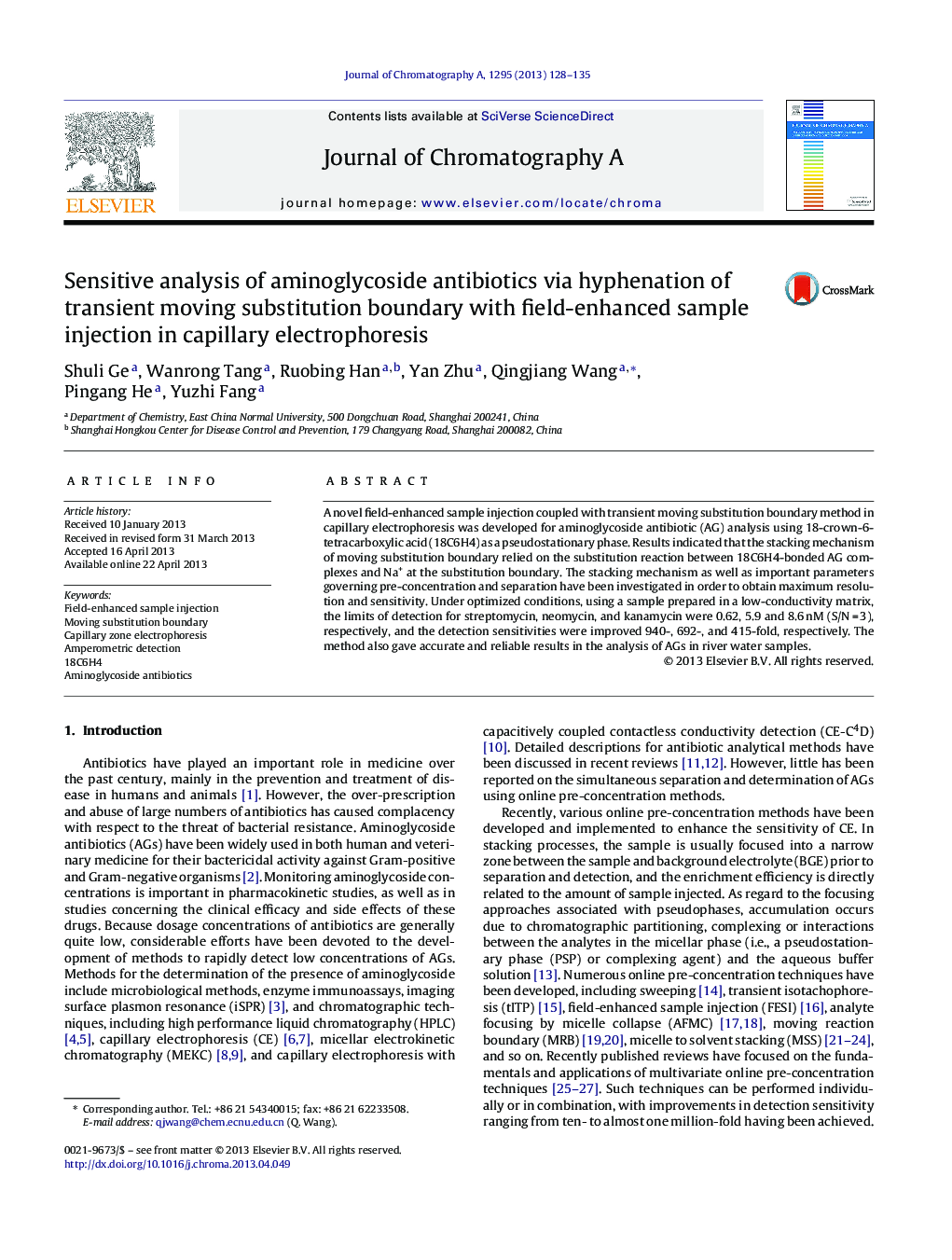| Article ID | Journal | Published Year | Pages | File Type |
|---|---|---|---|---|
| 1201648 | Journal of Chromatography A | 2013 | 8 Pages |
•A novel FESI-MSB method in CE-AD was developed.•The mechanism of MSB relied on substitution reaction between 18C6H4-AGs and Na+.•18C6H4 proved to be a novel PSP for analytes with primary amine groups focusing.•This strategy afforded about 400–1000-fold improvements in detection sensitivity.
A novel field-enhanced sample injection coupled with transient moving substitution boundary method in capillary electrophoresis was developed for aminoglycoside antibiotic (AG) analysis using 18-crown-6-tetracarboxylic acid (18C6H4) as a pseudostationary phase. Results indicated that the stacking mechanism of moving substitution boundary relied on the substitution reaction between 18C6H4-bonded AG complexes and Na+ at the substitution boundary. The stacking mechanism as well as important parameters governing pre-concentration and separation have been investigated in order to obtain maximum resolution and sensitivity. Under optimized conditions, using a sample prepared in a low-conductivity matrix, the limits of detection for streptomycin, neomycin, and kanamycin were 0.62, 5.9 and 8.6 nM (S/N = 3), respectively, and the detection sensitivities were improved 940-, 692-, and 415-fold, respectively. The method also gave accurate and reliable results in the analysis of AGs in river water samples.
